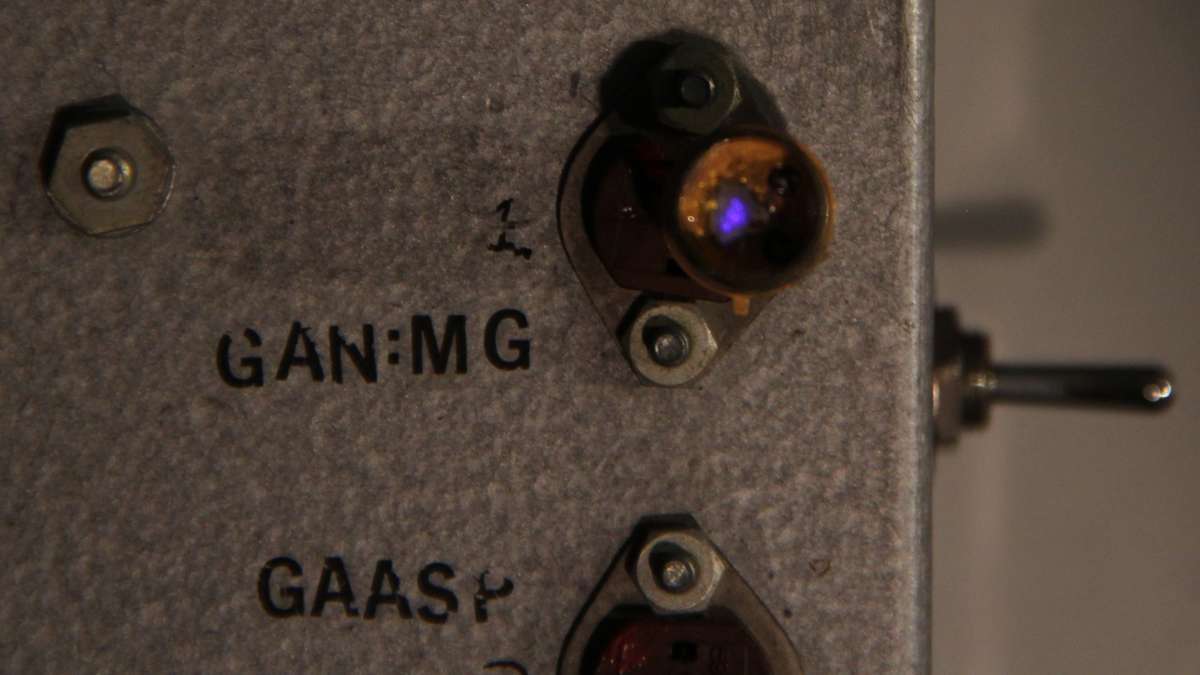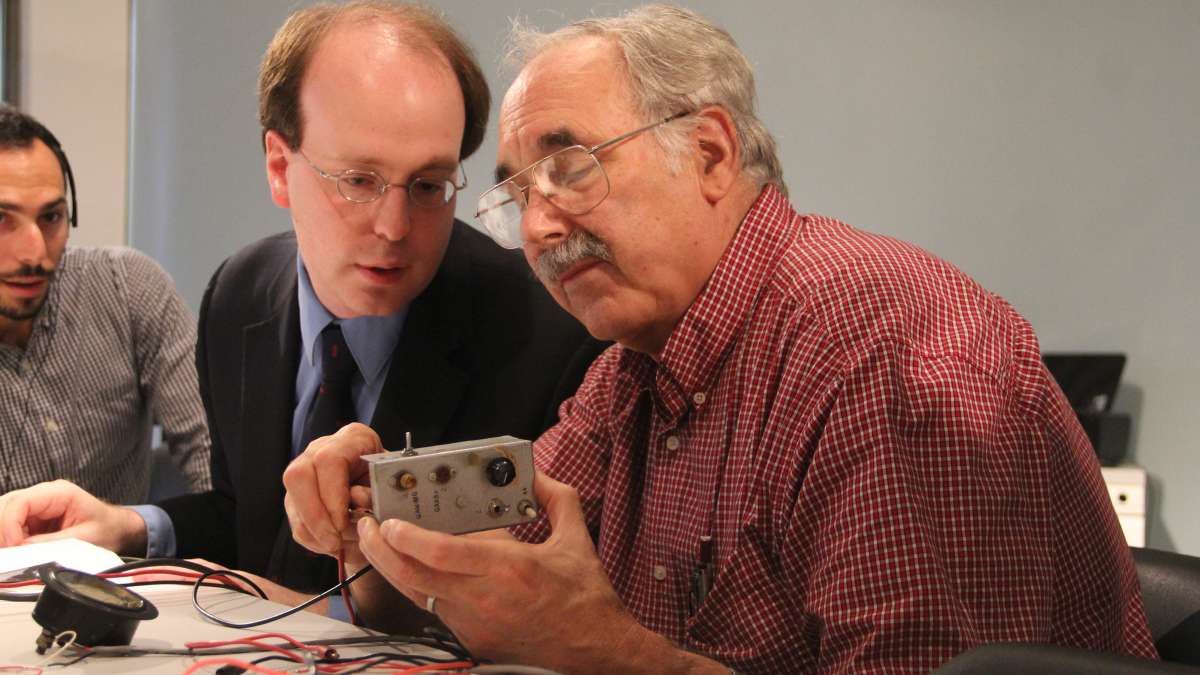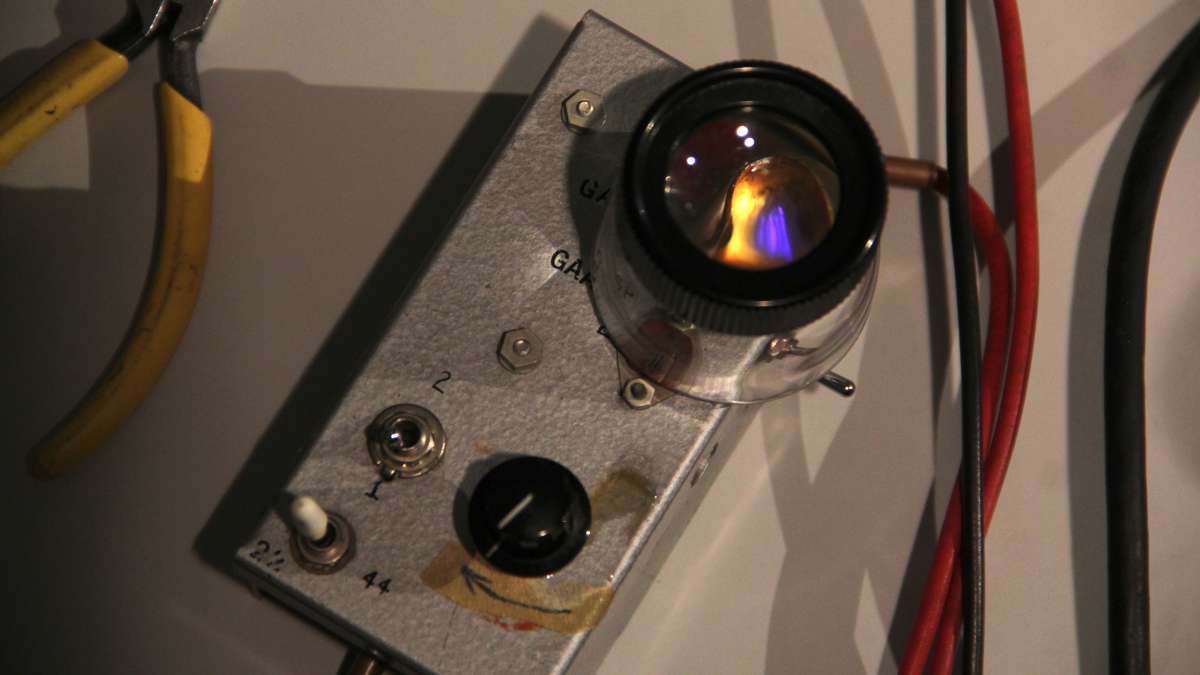The blue LED’s Nobel-worthy lineage traces through N.J.
ListenIn explaining its decision last week, the Royal Swedish Academy of Sciences, the group that selects the Nobel Prize winner for physics, declared that “the 21st century will be lit by LED lamps.”
Specifically, blue LEDs, the light-emitting diodes that produce clean, bright light but suck up far less power than the incandescent bulbs that illuminated the 20th century.
The 2014 prize is being shared by three Japanese-born researchers for their work commercializing the blue LED. The Academy marveled at the strides made in the past two decades.
New Jersey roots
The blue LED story, though, goes back a little deeper.
“I knew for a fact that wasn’t the case,” says Ben Gross. “I had held an LED that was older than that in my hands.”
Gross is a research fellow at the Philadelphia-based Chemical Heritage Foundation, and curator of the Sarnoff Collection, a small museum dedicated to electronics and broadcasting equipment on the campus of the College of New Jersey.
One of the pieces housed there is that old LED. It was first made in Princeton, inside the laboratories of the Radio Corporation of America, or RCA.
“RCA in the 1960s was the leader in consumer electronics in the United States, and one of the things that its chairman David Sarnoff really wanted was to create a television that could hang on the wall like a painting,” says Gross.
To make a flat screen TV, though, engineers first had to produce three different color diodes to form the picture.
“Red and green ones were developed in the early 1960s, but blue, for a variety of reasons, turned out to be more complicated,” he says.
Enter Herb Maruska: a young researcher who by 1972 had successfully made a working prototype using a semiconductor compound called gallium nitride.
But the breakthrough arrived too late. RCA by then was in a financial tailspin after aggressively entering a computer market that IBM came to dominate. The Princeton labs where Maruska toiled were closed as research budgets at RCA were slashed.
The original blue LED, a tiny bulb attached to a small gray box with a battery pack on the back, found itself in the dark drawer of Maruska’s desk, where it would sit for decades.
When the Sarnoff Collection opened, he donated it for public viewing, and today, it sits in its original form.
Lighting up
After hearing of the Nobel announcement, and the omission of Maruska, Gross wanted to see if the prototype blue LED still worked.
He’s asked Jonathan Allen to lend a hand. A retired physicist, Allen volunteers at the Sarnoff and helps keep the old equipment up and running.
First thing they do is check the power source, a 22.5 volt battery attached to the back.
“Son of a gun, it actually has some poop,” Allen says after plugging it into a volt meter.
“How much voltage are we talking here?” says Gross.
“20 volts,” replies Allen.
“That’s not bad,” Gross says.
‘Poop’ is apparently engineering speak for power, at least amongst this crowd.
“I think we are ready, if we want to try getting started,” says Gross. “We can call Herb Muraska, and see if we can get this LED lit.”
Over a speakerphone, Muraska joins the experiment, urging caution.
“There’s only one, so you got to be careful!”
The team double checks the connections.
“Black to black, red to red. Okay, here we go.”
Allen slowly turns the dial.
“Anything?”
Nothing. Time to recheck the plugs. Everything’s fine.
What about the power source? Yup, turns out there’s a lack of ‘poop’ in the old battery.
Allen and Gross reroute the blue LED to another source, turn the dial, and…
“Yes, we are drawing current, we are drawing current,” says Allen.
A tiny glow comes into view.
“We got it, it is lighting faintly. We’ve got blue, it is glowing, that is definitely blue. It is beautiful!” says Gross.
A voice crackles with joy over the phone: “After all these years?”
These guys are over the moon. This little blue light, this artifact from the tale end of the golden age of American technology still fires.
The Nobel may have overlooked this contribution, but the foundation for the light bulbs of the future was laid in America.
“It all starts here,” says Gross. “It all starts in New Jersey.”
WHYY is your source for fact-based, in-depth journalism and information. As a nonprofit organization, we rely on financial support from readers like you. Please give today.







